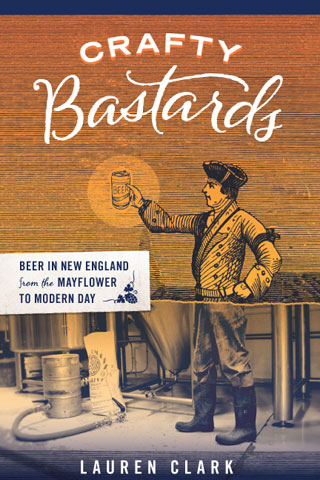July 27th, 2007
Tales of the Cocktail 2007

Wow. As we say in New England, that was wicked awesome. The last time I was in New Orleans, I was a dumb college kid hanging out on Bourbon St. drinking Hurricanes with the rest of the tourists. Fast-forward many years to Tales of the Cocktail 2007, where I attended seminars on vermouth and pimento dram and drank Pimm’s Cups at the honorable Napoleon House. The older, wiser me had a much better time.
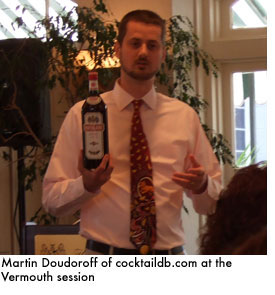 If drinking cocktails for breakfast, lunch and dinner, then going out at night for more cocktails, is your idea of heaven, this is the event — and the town — for you. At a 10 a.m. session on applejack, we were served a Golden Dawn, a Jack Rose and a Wicked Kiss (a Widow’s Kiss with the addition of rye whiskey). Haigh (Vintage Spirits and Forgotten Cocktails), Gary Regan (The Joy of Mixology, Regan’s Orange Bitters), and Chad Solomon and Christy Pope (Cuff & Buttons) presided over the seminar with an unofficial fifth panelist: Lisa Laird of the Laird family. Yes, that Laird family, the ones who have produced Laird’s Applejack since the 1700s and who had George Washington over for dinner before the Battle of Monmouth. The cocktails were made with bonded Applejack, which is distilled with 100-percent apples (no grain neutral spirits) and aged for four years — and which, as far as I know, cannot be had in the Boston area. Too bad.
If drinking cocktails for breakfast, lunch and dinner, then going out at night for more cocktails, is your idea of heaven, this is the event — and the town — for you. At a 10 a.m. session on applejack, we were served a Golden Dawn, a Jack Rose and a Wicked Kiss (a Widow’s Kiss with the addition of rye whiskey). Haigh (Vintage Spirits and Forgotten Cocktails), Gary Regan (The Joy of Mixology, Regan’s Orange Bitters), and Chad Solomon and Christy Pope (Cuff & Buttons) presided over the seminar with an unofficial fifth panelist: Lisa Laird of the Laird family. Yes, that Laird family, the ones who have produced Laird’s Applejack since the 1700s and who had George Washington over for dinner before the Battle of Monmouth. The cocktails were made with bonded Applejack, which is distilled with 100-percent apples (no grain neutral spirits) and aged for four years — and which, as far as I know, cannot be had in the Boston area. Too bad.
At Prohibition’s Shadow, which featured Haigh, David Wondrich, Robert Hess (drinkboy.com) and John Hall (distiller of Forty Creek Canadian whiskey), we sipped samples of Forty Creek, a blend of rye, corn and barley whiskies, all distilled separately then blended. That stuff was righteously smooth and had flavors of an old ale, like Thomas Hardy’s. Why Canadian whiskey? Well, where do you think speakeasies got their whiskey during Prohibition? The session itself turned into a bit of a speakeasy when John Myers, bartender, cocktail historian and author of the Thirstin’ Howl, suddenly pulled a bottle of Fernet out of his bag and began dispensing shots. Perfectly appropriate at this sort of convention.
Cocktails and the Blogosphere, another 10 a.m. session (oh, my head!) involved Fancy Free and Police Gazette cocktails by way of illustrating how obscure drinks get re-discovered and popularized through blogs. Full of whiskey and bitters, these are two libations that’ll set the vintage-cocktail enthusiast’s heart aflutter. Paul Clark (Cocktail Chronicles), Chuck Taggart (Gumbo Pages), Darcy O’Neil (The Art of Drink) and Rick Stutz (Kaiser Penguin) presided. The session’s money quote (by Paul, I think): “At the 10th anniversary of Tales of the Cocktail, we’ll be talking about the recently launched 100,000th drink blog.”
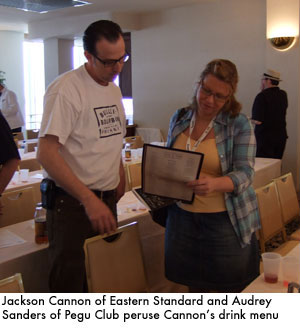
The money quote from the session simply titled Vermouth (with Haigh and Martin Doudoroff, the geniuses behind cocktaildb.com) came from Haigh just as we started: “It’s 11:30 in the morning, and you guys are at a session on vermouth? Get a life!” We sipped a Marconi Wireless (speaking of bloggers rediscovering old drinks) and a Rose and learned that it’s really hard to get information from vermouth producers (Martini & Rossi, Noilly Prat, etc.) on the spices they use to turn red or white wine into a classic cocktail ingredient. One of the panelists did manage to get hold of some info, and she recited a list of ingredients used in M&R and NP, but I was way beyond note taking at that point.
The Lost Ingredients session was a trip. I had never even heard of pimento dram or Batavia arrack, much less tasted them, before that day. The session was basically a live interpretation of “Gone but Not Forgotten,” the article Clarke wrote for the current issue of Imbibe. I urge any cocktail enthusiast to pick up that issue, because Clarke’s article includes info (and some recipes) on some of the amazing, re-emerging spirits we sampled at Lost Ingredients, including: pimento dram, a rum-based, allspice-flavored liqueur rarely found outside Jamaica — we sampled Taggart’s homemade version; Batavia arrack, a sugar cane- and fermented rice-based spirit produced in Java (formerly the Dutch colony of Batavia) and the basis of Swedish punsch; and falernum, a low-alcohol syrup flavored with limes, ginger, almonds and clove and a key ingredient in many tiki drinks. Read more about the Lost Ingredients session here.
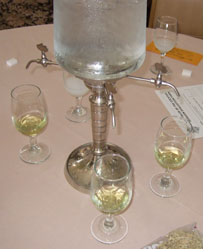 Finally, Sunday brunch: absinthe with a little sugar. I walked into that session a little late, and when I entered the room … wow, the licorice perfume enveloped me, a sensory experience I’ll never forget. Chemist and absinthe expert Ted Breaux gave a comprehensive presentation about absinthe history, myth and legal status, which is apparently still kind of fuzzy in the U.S. He devised the recipe for the new, legal-in-the-U.S. absinthe Lucid, which contains wormwood but only a barely measurable amount of wormwood’s active and feared ingredient, thujone. Anyhoo… somehow we were drinking real Swiss and French absinthe (the latter produced from a recipe of Breaux’s) in the traditional way, by very slowly letting ice water drip into the glass until the liquid became cloudy. This stuff was strong — over 130 proof! I don’t think absinthe should be banned, but I’m not sure if I recommend it as the first meal of the day.
Finally, Sunday brunch: absinthe with a little sugar. I walked into that session a little late, and when I entered the room … wow, the licorice perfume enveloped me, a sensory experience I’ll never forget. Chemist and absinthe expert Ted Breaux gave a comprehensive presentation about absinthe history, myth and legal status, which is apparently still kind of fuzzy in the U.S. He devised the recipe for the new, legal-in-the-U.S. absinthe Lucid, which contains wormwood but only a barely measurable amount of wormwood’s active and feared ingredient, thujone. Anyhoo… somehow we were drinking real Swiss and French absinthe (the latter produced from a recipe of Breaux’s) in the traditional way, by very slowly letting ice water drip into the glass until the liquid became cloudy. This stuff was strong — over 130 proof! I don’t think absinthe should be banned, but I’m not sure if I recommend it as the first meal of the day.
In my next post, I’ll provide some snapshots of what happened outside of the Tales of the Cocktail sessions.
Posted in Absinthe, Applejack, Cocktails, Events, New Orleans, Vermouth, Whiskey | 6 Comments »
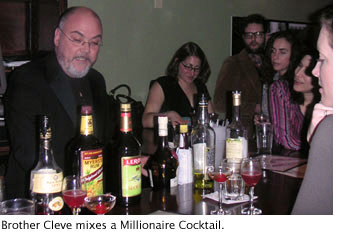
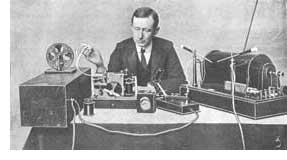 There are a million old cocktail recipes out there. Sometimes, you’ll stumble upon one that’s really intriguing, as I did recently with the
There are a million old cocktail recipes out there. Sometimes, you’ll stumble upon one that’s really intriguing, as I did recently with the 